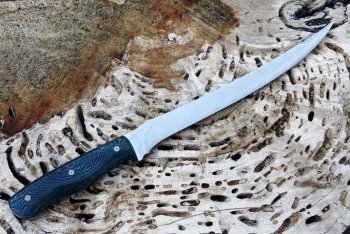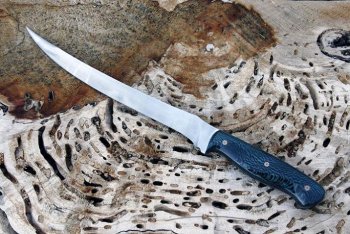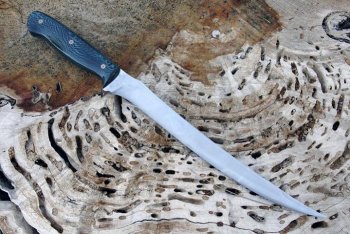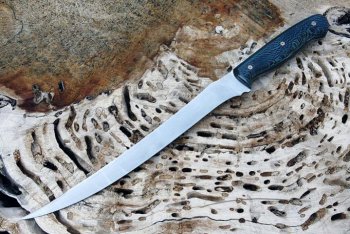HHH Knives
Super Moderator
Hello, Im making a fillet blade from O1 steel, its a 9 inch blade..
I have a few questions and am hoping one or two of you dogs can guide me through it.
Whats the best way to harden and the temper out a fillet blade without warping it? Or whats the proper way to do it.
I have done one today, had it ground and all cleaned up. Took it up to non magnetic and quenched it in water. The results were not what I had hoped and the blade halfway down the spine warped badly..
Should I normalize the steel B4 grinding, or after, or not necessary?
Any and all help or advise would be greatly appreciated!
Thanks,
I have a few questions and am hoping one or two of you dogs can guide me through it.
Whats the best way to harden and the temper out a fillet blade without warping it? Or whats the proper way to do it.
I have done one today, had it ground and all cleaned up. Took it up to non magnetic and quenched it in water. The results were not what I had hoped and the blade halfway down the spine warped badly..
Should I normalize the steel B4 grinding, or after, or not necessary?
Any and all help or advise would be greatly appreciated!
Thanks,





